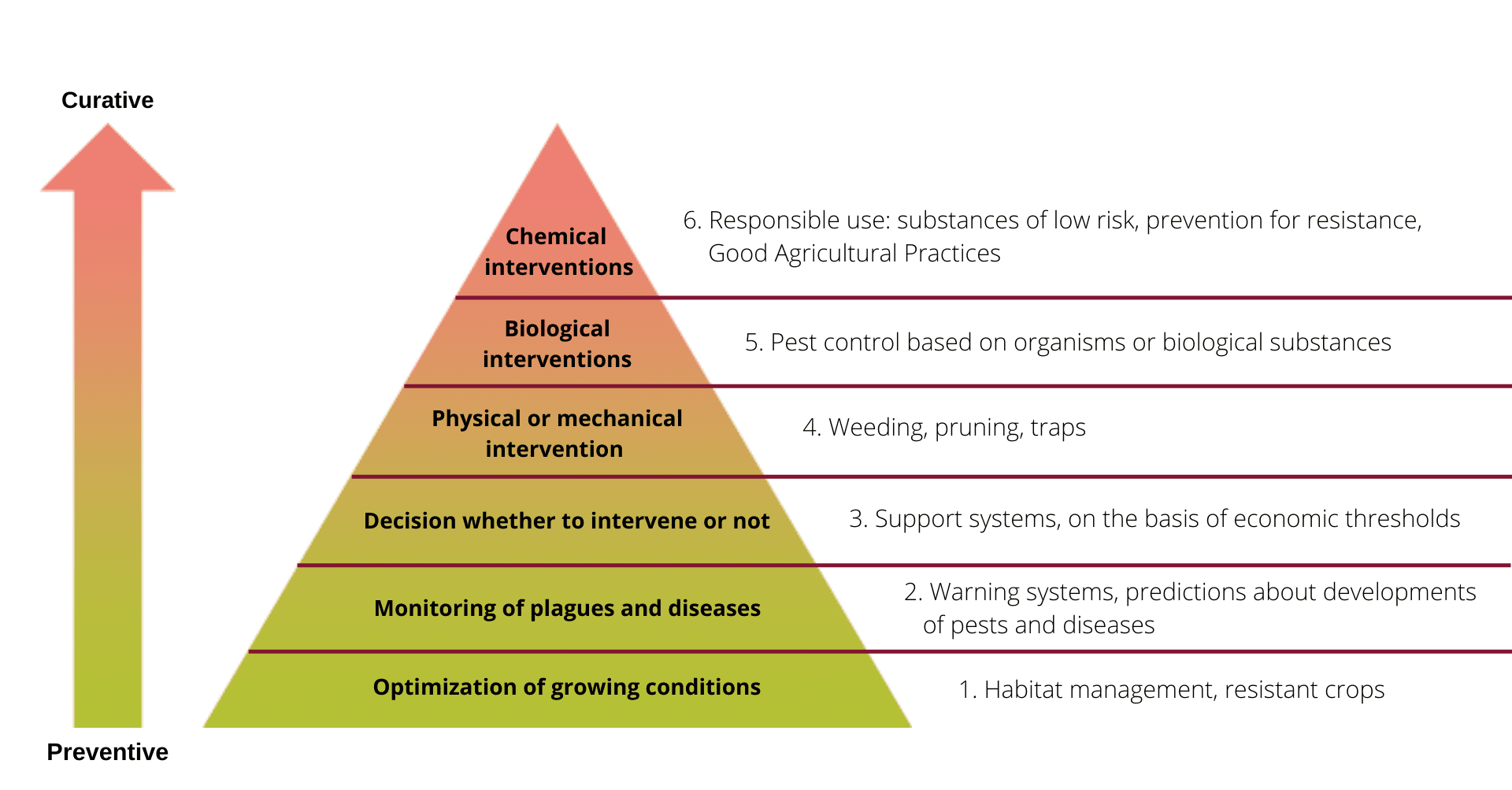Principles of Integrated Pest Management
In preparation of the webinar Promote Pollinators is pleased to share some information on the concept of IPM. We hope that this will help our audience – if even necessary – to be informed about IPM in such a way that they may optimally participate in the webinar. Both in processing the information given as in discussing through our chat facilities.
Disclaimer: the information below is not a formal document acknowledged by any authority. It is also not a comprehensive dissertation. It is merely a light introduction to the concept of IPM.
Want to join?
What does Integrated Pest Management mean?
Integrated Pest Management is a practical way of reducing the use of pesticides, one of the major threats to pollinators. There are many descriptions of IPM. Some are more general, some are more detailed. The general concept is always that the use of chemical pesticides is the last resort to control a pest or disease and should be preceded by a cascade of activities that should help to avoid – as much as possible – the need for chemical pesticides. These activities are based on a set of principles that are illustrated in figure 1.

Figure 1. Principles of IPM
The principles in their character show a gradual shift from prevention of the occurrence of diseases and pests to curation when they despite the preventive measures do occur.
- As a first principle for all good agricultural practice, it is essential to work on good growing conditions combined with crops that are fit for purpose. Soil must be in good condition, varieties must be fit for the climate and, where possible, be resistant to the relevant pests and diseases. Applying these and other preventive measures help avoiding the pests and diseases to come up.
- Next principal is about knowing the situation. It is of course important to know what the condition of the crop is, and whether plagues or diseases are discernible. This is essential to be able to decide whether corrective measures are to be applied.
- The question whether these corrective measures are proportional must then be answered (third principal). Obviously, this is a very nuanced consideration. For one individual aphid, mite or worm the one day, can be a full-blown infection the next. This is all depending on diverse factors such as the growing phase of the crop, the current condition of the crop and the weather conditions. In the industrialized agriculture decision support systems have been developed to help the farmer decide whether there is a problem or not, and if yes what to do.
- When it is concluded that there is an actual problem, the first step is to apply physical measures (fourth principal). These can be measures such as weeding or pruning or traps or even the removal of infested plants.
- A step further (fifth principal) can be the active introduction of organisms that have a controlling function on the plague or pest, or to apply organic pest control substances. Finally, if all these measures have not helped, it can be decided to apply chemical substances.
- But even then, (sixth principal) good application of IPM requires a thorough consideration of which pesticides should be used, how they should be supplied (e.g. avoid drift of the substance), and it must be prevented that the pest organism may develop resistance against the pesticide.
